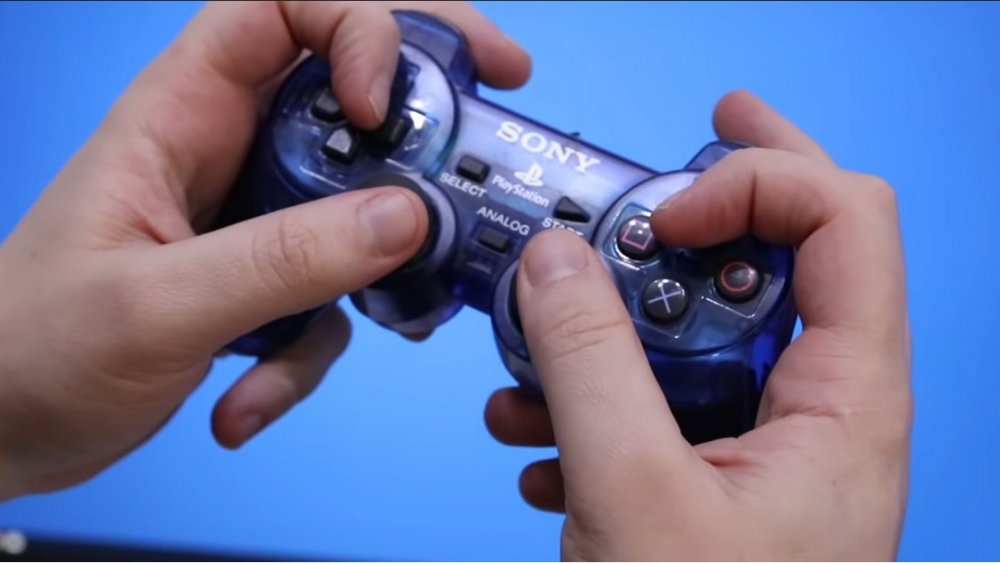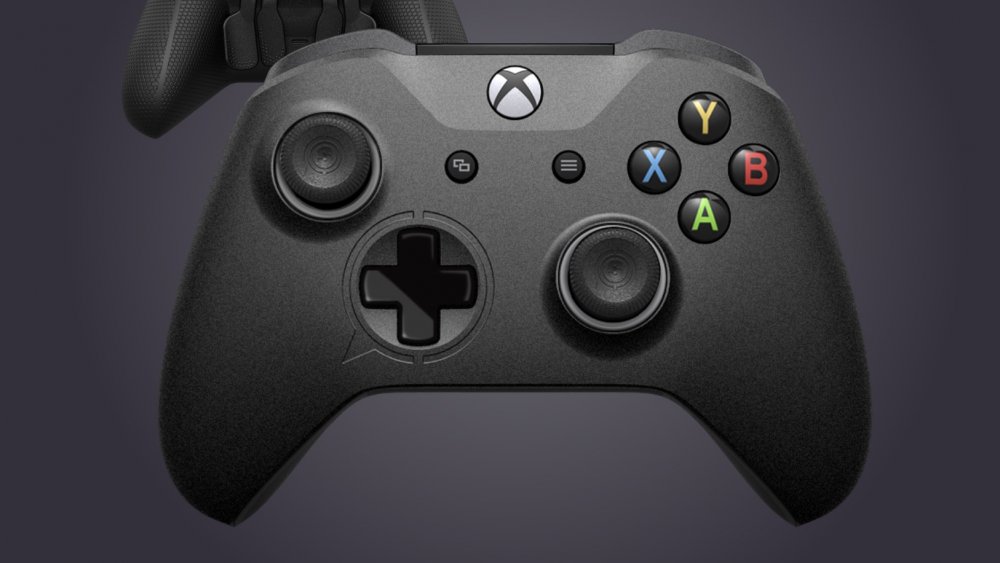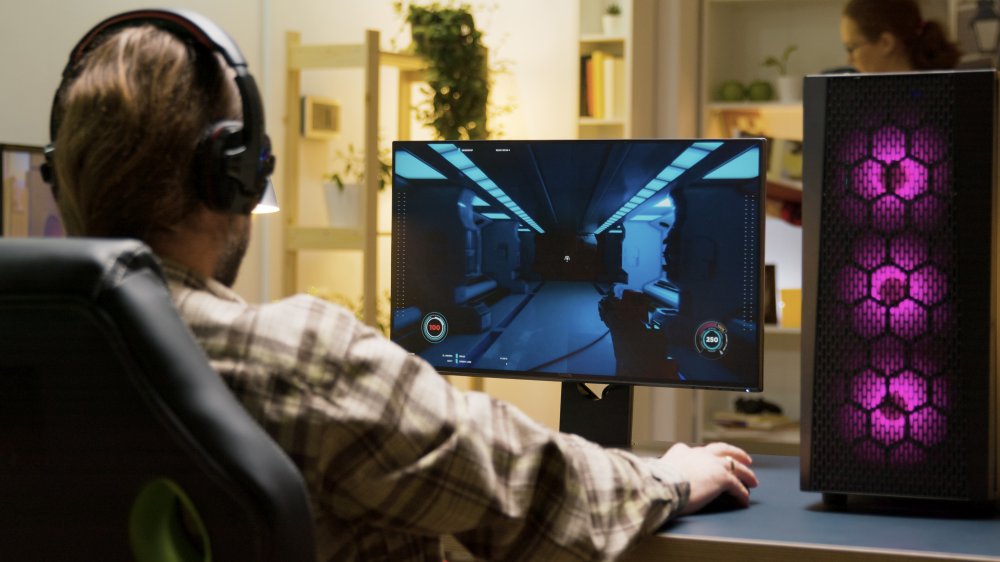What Happens To Your Hands When You Play Claw On Controller Every Day
When it comes to gaming controllers, research has found that ease of use is key. Each console generation introduces new controller variants, leaving players to try and determine the most optimal hand positions to get as much out of gaming as possible.
Most gamers are familiar with the "standard" grip, which involves placing the index fingers on the left and right trigger buttons while your thumbs move back and forth between directional pads and thumbsticks. However, for some, this causes a bit of an issue — if your thumb is on the thumbstick and your index finger is on the trigger, you have no usable fingers free for all those directional buttons on the top right of your controller. So, they've figured out a solution that has become as natural for some players as it is uncomfortable for others.
The "claw" grip adds another finger into the equation. Your thumbs remain on the thumbsticks, while your most agile finger, the index finger, is reserved for the directional buttons. Your middle finger (or ring finger) is drafted into action to play the trigger buttons.
But what happens when you use this non-standard grip every day?
Claw style could lead to increased finger dexterity
Although publications like the Journal of Ergonomics have published research on the ways video game controllers have become more comfortable and ergonomic over the years, most of these studies have not looked at variances in grip. Yet, that doesn't mean the gaming industry has failed to take notice of the claw. In fact, Scuf Gaming's Duncan Ironmonger has stated the company dew inspiration from the style when developing its under-controller paddles.
"Playing claw was really how a lot of the competitive players, especially in shooters like Call of Duty, were actually able to compete at a higher level," Ironmonger told Kotaku. "If you take that general concept, two thumbs [and] two fingers to control 20-plus functions on a controller, then I think we'll all agree that by using more of your hands, theoretically, you could reduce that latency and you could become skillful and show more dexterity."
That's the concept behind Scuf controllers, which are often referenced when people talk about the claw grip. According to YouTube channel PlayStationGrenade, some gamers even call the claw grip the "free Scuf controller."
Claw grip can put you at risk for wrist and hand pain
There don't appear to be any studies focused on whether the claw grip is good or bad for your hands. However, there is plenty of anecdotal evidence that it can lead to pain and overuse injuries.
In a video from late 2019, YouTuber NICKMERCS sounded an alarm by saying, "Claw is bad for your health. That's why they came out with Scufs, man." He says he knows people who have been playing claw without incident for many years — and some who stopped "because they developed these huge pains in their forearms and their wrists" from playing claw. "You can't hold a controller like this all day every day and expect to not develop a little bit of carpal tunnel," he concluded.
Esports Healthcare verifies the danger, noting that the way in which five specific muscles are used during the claw grip can lead to index finger strain. Specifically, the outlet says claw grip users can experience pain, fatigue, discomfort, and injury. Muscle fatigue may manifest as a burning sensation and slower reactions, while overuse imbalance might cause muscle and tendon injuries.
Esports Healthcare recommends warming up sufficiently, taking breaks, watching your posture, and eating and drinking properly as ways to combat the negative effects of the claw grip should you decide to employ it regularly.



